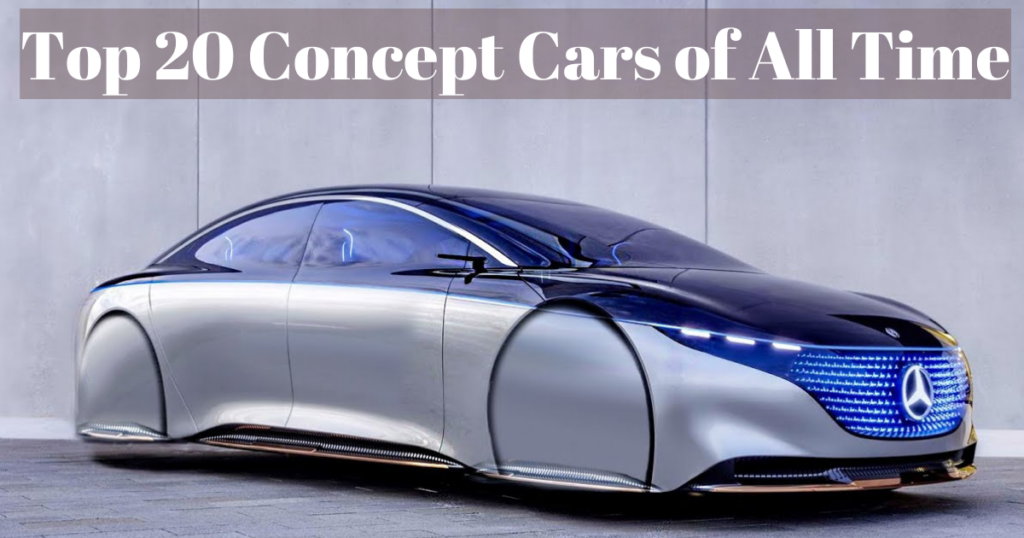
What characteristics distinguish a fantastic concept car? Concept vehicles are futuristic models representing the next automotive design and innovation phase. Most concept vehicles are somewhat idealistic, but the best ones inspire enthusiasm and give us a peek at the future of transportation. Additionally, if they seem excellent, that is just a plus.
Welcome to the fascinating world of concept automobiles, where creativity and engineering converge. We urge you to read this article to learn more about the cutting-edge world of concept automobiles, where producers test the limits of sustainability, technology, and design. Concept vehicles look at the potential that lies ahead in the automobile industry, from svelte and futuristic designs to ground-breaking advancements.
Join us on an exciting adventure as we explore the top 20 concept cars that highlight the innovative thinking and artistic skill of prominent manufacturers. Prepare to be inspired by the fantastic ideas influencing the future of transportation.
1. Buick Centurion Concept (1956)
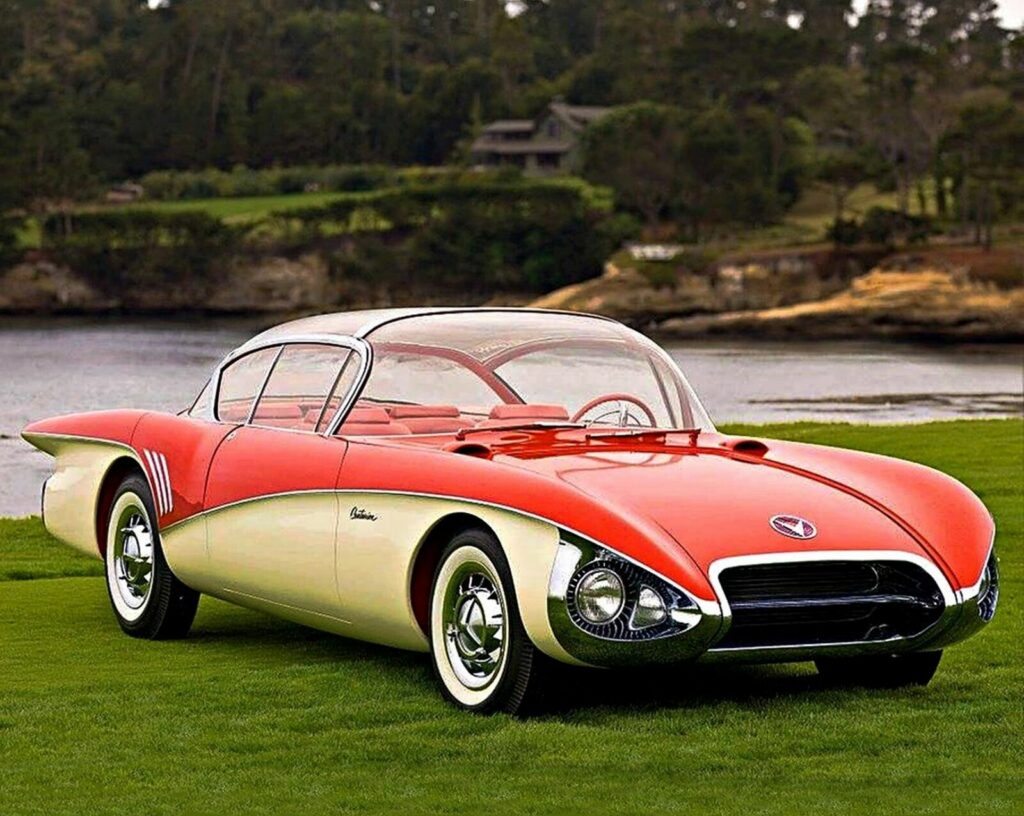
- Featured in: 1956 General Motors Motorama
- Designer: Chuck Jordan
The sleek four-seat coupe Buick Centurion from 1956 included a patented television camera installed at the back of the vehicle to give the driver a look in the rear. When the doors opened, the front seats moved back automatically for more straightforward entry and forwarded to provide access to and escape from the back seats.
We liked that the cantilevered steering wheel provided more legroom for the driver, which placed the steering shaft in the middle of the vehicle.
2. Ford Nucleon Concept Car (1958)
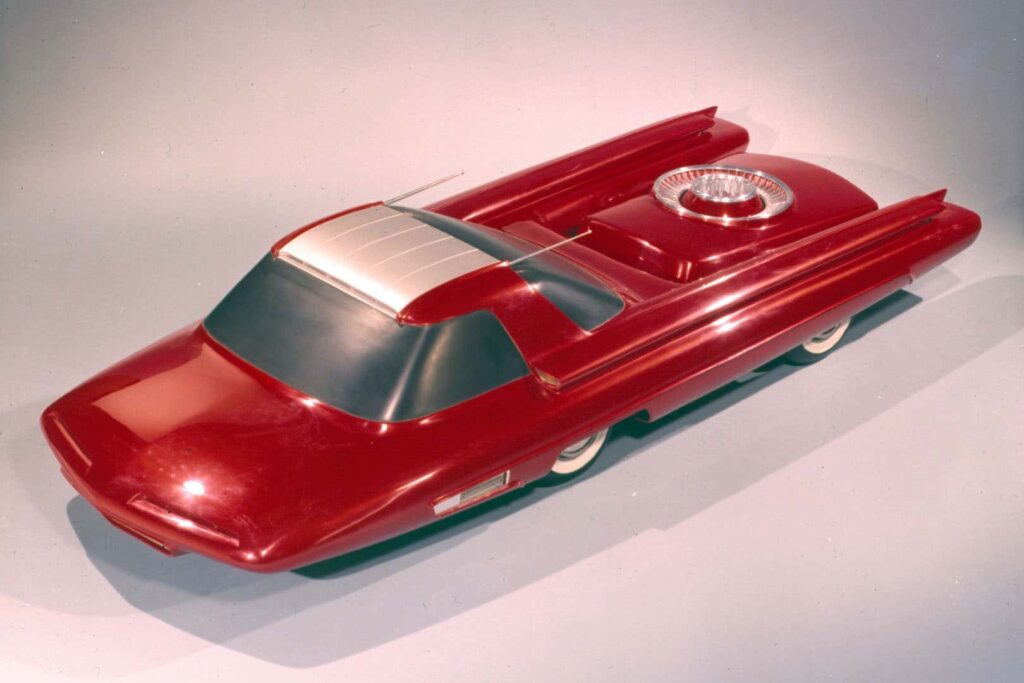
- Featured in: 1958
- Designer: Jim Powers
One of the few nuclear-powered vehicle concepts created in the 1950s and 1960s, the Ford Nucleon is a concept automobile built by Jim Powers. Only a scale model was used to explain the concept.
Instead of an internal combustion engine, the vehicle was intended to be powered by a tiny nuclear reactor in the back, with the idea that this would eventually be feasible due to size reductions. A steam engine fueled by uranium fission similar to those seen in nuclear submarines was intended to power the vehicle.
3. Volkswagen I.D. Buzz (2017)
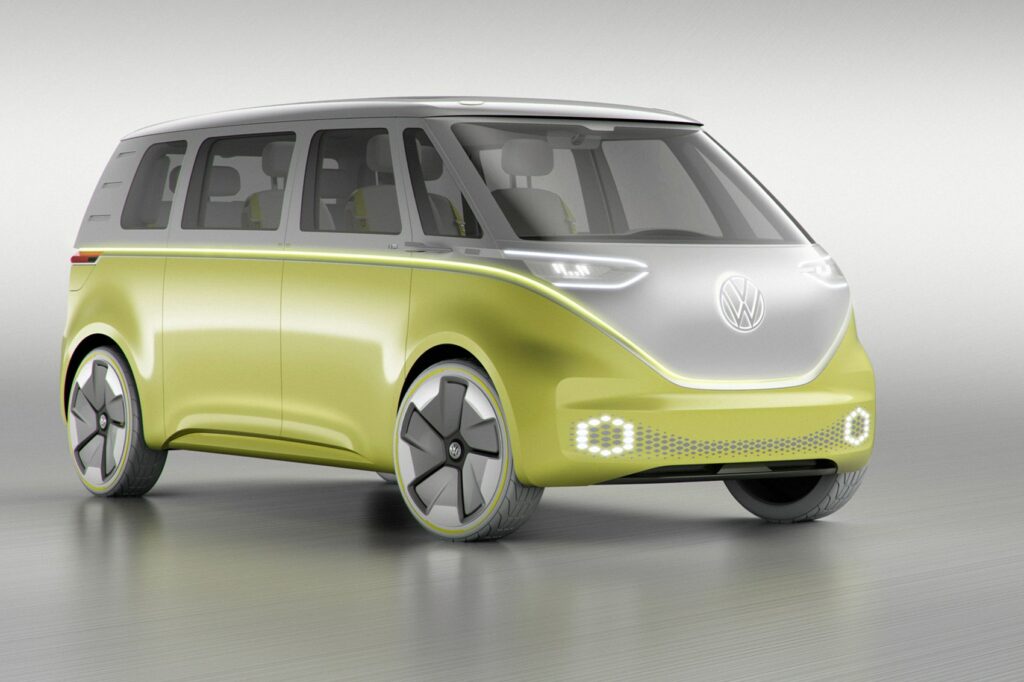
- Featured in: 2017 in various automotive publications
- Designer: Designed by a team led by Klaus Bischoff
Volkswagen recreated the enchantment with the I.D. The buzz concept is an electric version of the classic Volkswagen Type 2, better known as the Bus, some twenty or so years after the world fell in love with the Volkswagen Concept One.
Younger drivers seem excited to see the VW Bus return, even though many hippies who once drove VW vans are now gruff old Boomers flying “Trump 2024” signs. Volkswagen had planned to release a production version in 2022, but it did not materialize as intended.
4. Jaguar C-X75 (2010)
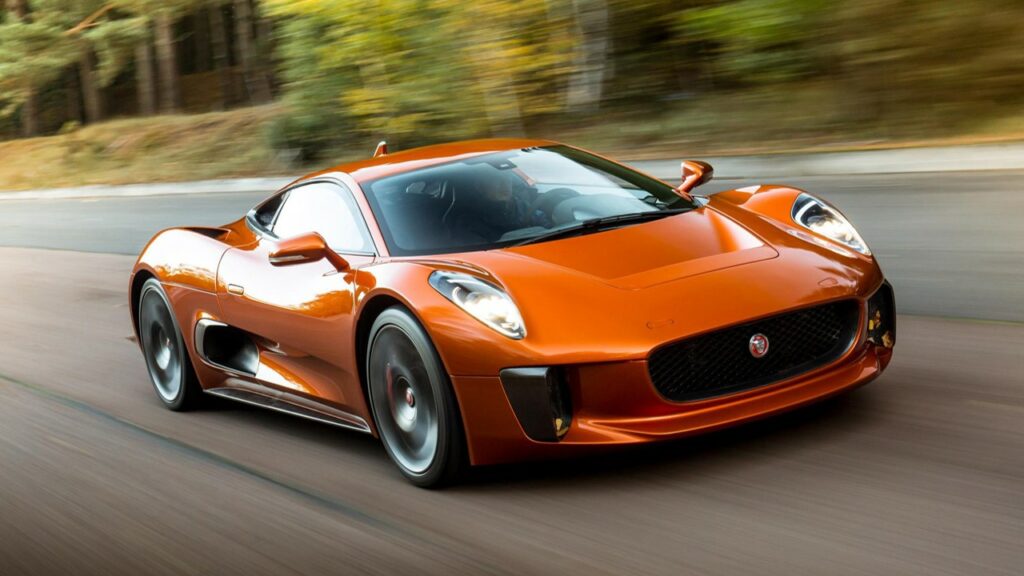
- Featured in: Various media outlets
- Designer: Ian Callum
Why is the Jaguar C-X75 so beloved? Let’s list them out. The style, which is truly the stuff of fantasy vehicles, comes first. The second is the gorgeous powertrain, which consists of two micro-turbine engines and four electric motors for a combined 780 horsepower (573.39 kW). Power is supplied by a battery charged by the two micro-turbine engines.
An electric automobile with jet propulsion! It’s as if we’ve returned to the 1950s after adding one or two fission reactors. The most absurd aspect is that Jaguar intended to manufacture the C-X75 (using a small-displacement gas engine instead of the jets). Still, the idea was shelved when Jaguar discovered how expensive it would be to produce.
5. Lamborghini Marzal (1967)
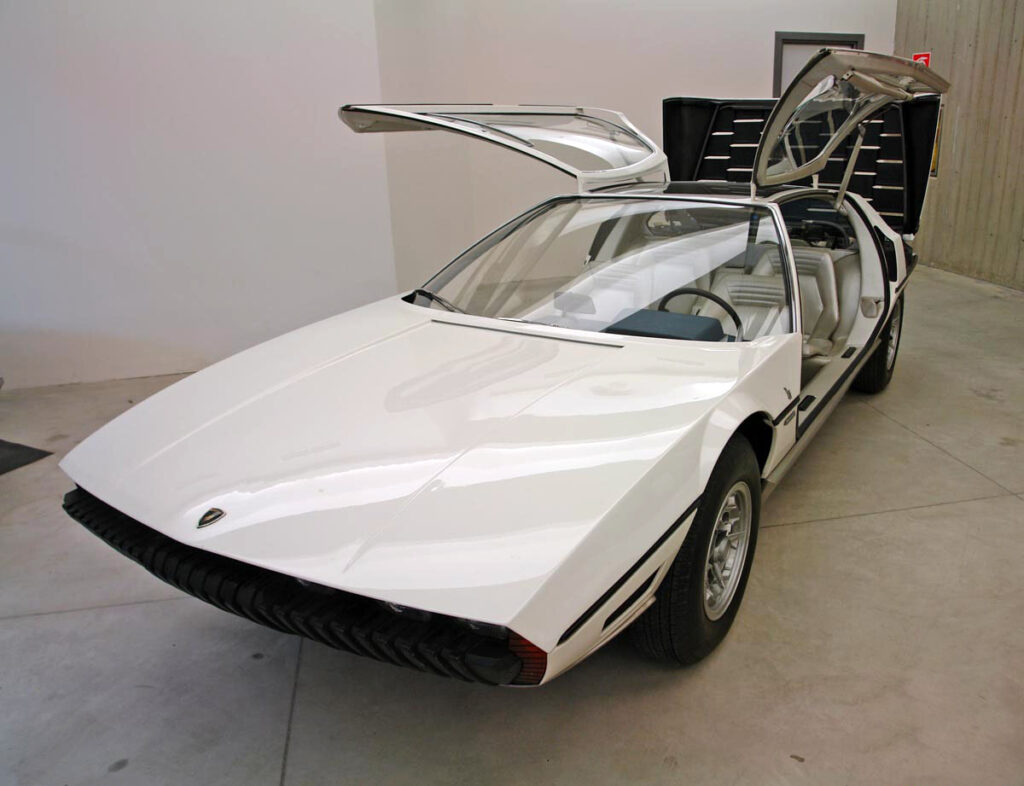
- Featured in: 1967 Geneva Motor Show
- Designer: Marcello Gandini
Marcello Gandini of Bertone designed it to add a real four-seater car to Ferruccio Lamborghini’s range, which already comprised the 400GT 2+2 and the Miura. It stood out thanks to its heavy glass gull-wing doors and heavily louvered back window. A split-in-half 2.0 L 175 horsepower (129 kW) inline-six engine from Lamborghini, with a 5-speed gearbox, provided the vehicle’s propulsion.
5. Alfa Romeo Carabo (1968)
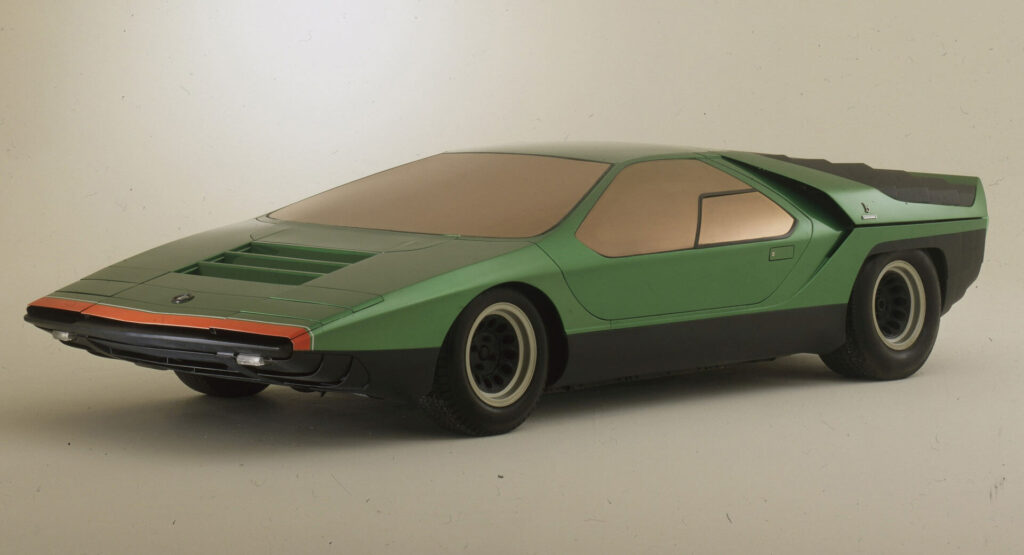
- Featured in: 1968 Paris Motor Show
- Designer: Marcello Gandini
A concept automobile called the Alfa Romeo Carabo was initially displayed at the 1968 Paris Motor Show. Marcello Gandini, a member of the Bertone design team, created the design. The automobile’s iridescent green and orange coloration is meant to resemble the Carabidae insects, from which the name Carabo is derived.
In the latter half of the 1960s, the wedge shape became popular. The Lamborghini Countach’s immediate progenitor, the Carabo, is frequently regarded as having won the 1968 “Wedge War” award. It also greatly impacted several automobile designs that appeared far into the next decade. Although it was never intended for mass production, it was completely functional and had characteristics like the wedge shape and scissor doors that were not seen in any other cars then.
The prototype was constructed using the Alfa Romeo 33 Stradale’s chassis, which houses a mid-mounted 2.0 L V8 engine paired with a 6-speed Colotti manual gearbox. The Carabo engine produced 150 lb-ft (20.7 kg-m) of torque at 7,000 rpm and 230 horsepower at 8,800 rpm. Due to this, it attained a peak speed of 155 mph, or 250 km/h.
6. Lancia Stratos Zero (1970)
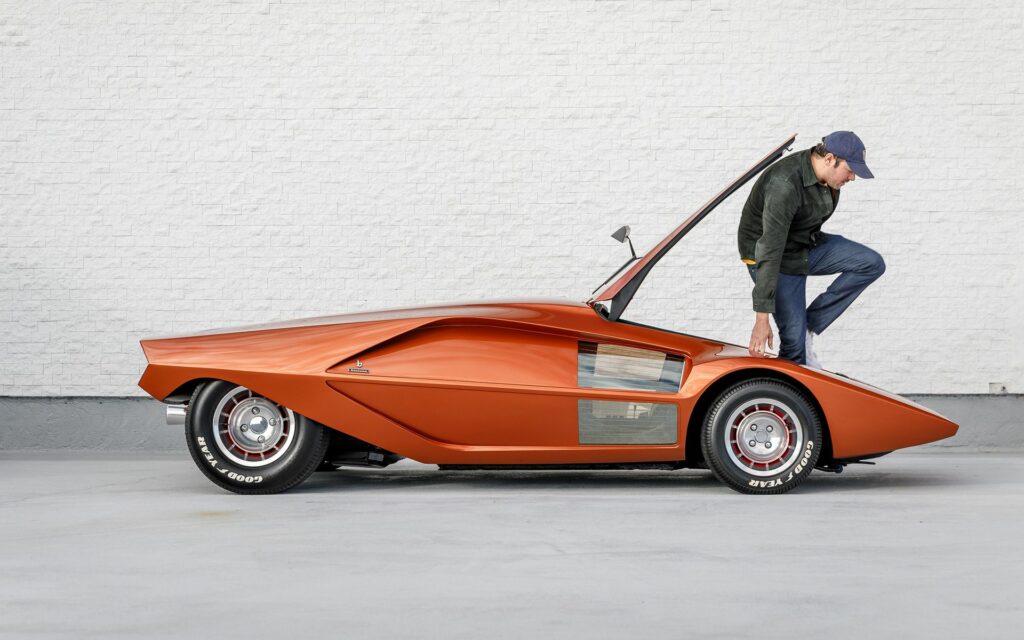
- Featured in: 1970 Turin Motor Show
- Designer: Marcello Gandini
The Lancia Stratos Zero was initially displayed to the public at the Turin Motor Show in 1970, one year before the Lancia Stratos HF prototype. Marcello Gandini, the chief designer of Bertone, created the futuristic bodywork, which included a 1.6 L Lancia Fulvia V4 engine. The Lancia Stratos HF Zero was on display in Bertone’s museum for a long time.
Our research revealed that it was sold for €761,600 in an auction held in Italy in 2011. It was displayed at the Petersen Automotive Museum in Los Angeles’ “Sculpture in Motion: Masterpieces of Italian Design” exhibition. It was on loan from the XJ Wang Collection of New York City and displayed at the “Dream Cars” exhibition at the High Museum of Art in Atlanta in 2014.
The car’s wedge-shaped body is painted a standout shade of orange. It is minimal, measuring 3.58 m (141 in) in length and 84 cm (33 in) in height, and it has few similarities to the finished product. The Zero had an appearance in Moonwalker, a 1988 Michael Jackson movie.
7. Ford GT90 Concept (1995)
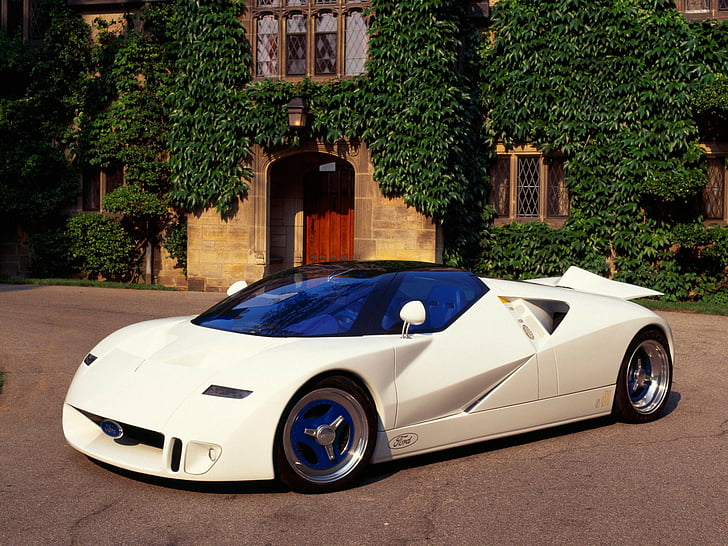
- Featured in: 1995 Detroit Auto Show
- Designer: Camilo Pardo
The mid-engined GT90 is a spiritual successor to the Ford GT40, taking from it some styling cues, such as doors that cut into the roofline but little else. Regarding angles and glass, the Ford GT90 was the first Ford to display the company’s “New Edge” design philosophy. The GT90 was built around a honeycomb-section aluminum monocoque, and its body panels were molded from carbon fiber.
The GT90’s 48-valve V12 is constructed on an aluminum block and head, displaces 6.0 liters, and produces an estimated 720 hp (529.56 kW) and 660 lb-ft (91 kg-m) of torque.
8. Chrysler Atlantic Concept (1995)
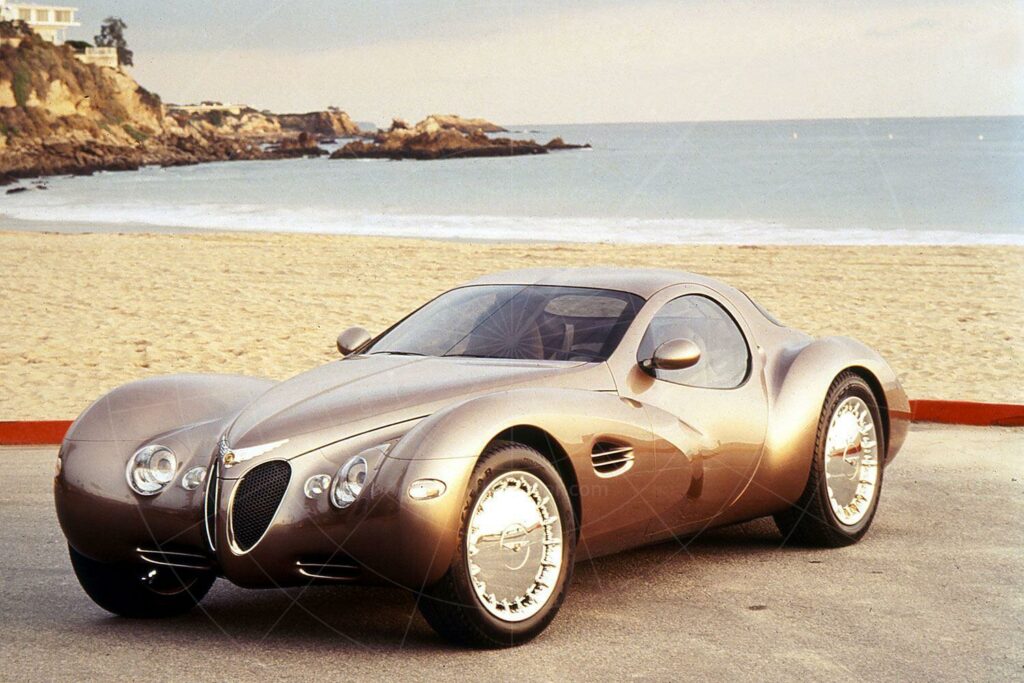
- Featured in: 1995 Detroit Auto Show and other international auto shows
- Designer: Bob Hubbach
The Chrysler Atlantic was a retro concept car created by Chrysler. It was first shown in 1995. The Atlantic was designed by Bob Hubbach and inspired by the Bugatti Atlantique. The idea for this car began as a sketch on a napkin by Chrysler’s president Bob Lutz in early 1993 and involved the automaker’s chief designer, Tom Gale.
9. Chevrolet Corvette Indy (1986)
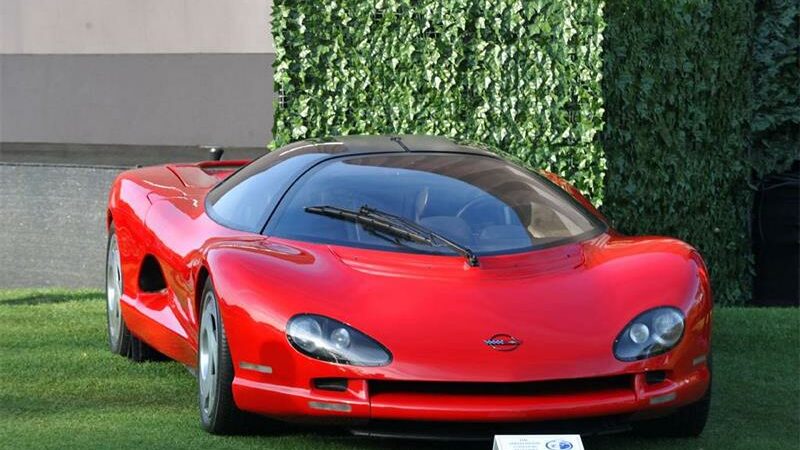
- Featured in: Detroit Auto Show
- Designer: Designed by a team led by Jerry Palmer
The 1986 Chevrolet Corvette Indy is, without a doubt, the most remarkable of the various Corvette ideas shown to us over the years, many of which still have mid-mounted engines. Remember that this concept vehicle debuted when most automobiles were still upright and squared-off and that even the 1986 Ford Taurus, which appears boxy to contemporary eyes, seemed as smooth as a bar of soap.
The small-displacement twin-turbo V-8 was reported to produce more than 600 horsepower (441.3 kW), and the body was composed of carbon fiber. The CERV III is entirely operational, thanks to the Indy. Additionally, the mid-engine C8 Corvette of today shows its influence. What truly astounds us is that the Corvette Indy’s sleek lines still seem good—and, dare we say it, futuristic—even though we lived through the GM age of the bland, blobby mobiles.
10. Lamborghini Cala (1995)
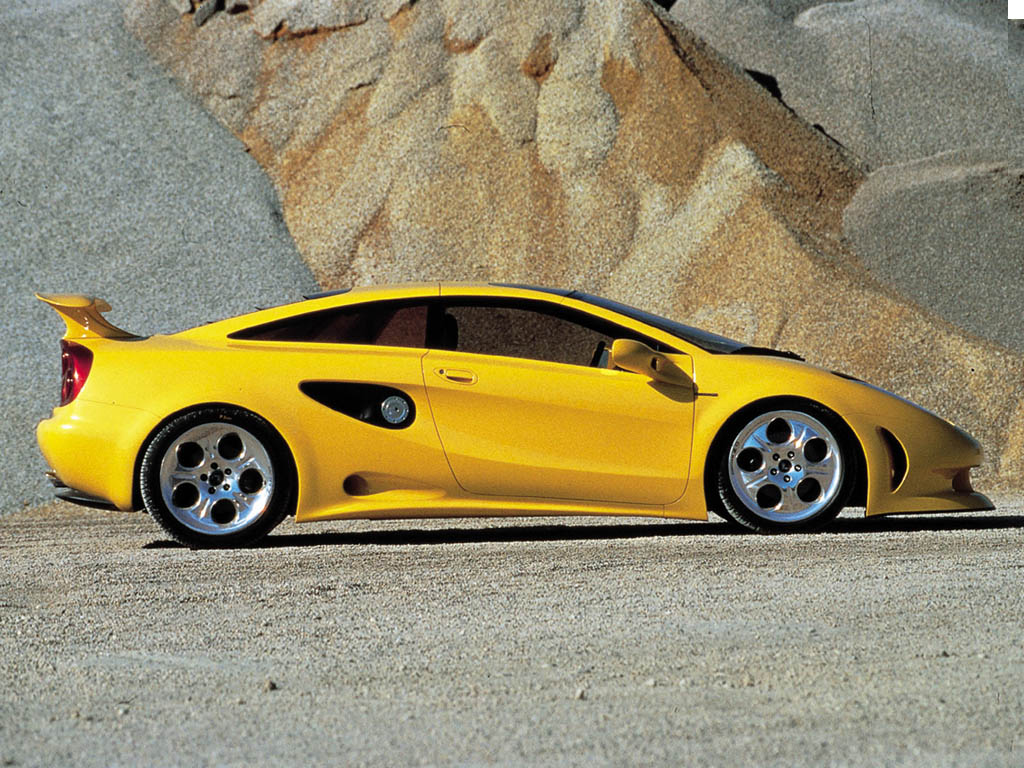
- Featured in: 1995 Geneva Motor Show
- Designer: Giorgetto Giugiaro
The Lamborghini Calà (also known as the Italdesign Calà) was a concept car designed for Lamborghini by Italdesign Giugiaro. It was first shown at the 1995 Geneva Motor Show. It was a completely functional prototype that never made it into production. Its name was derived from the Piedmontese dialect of Northern Italy and meant “look, over there!”.
Italdesign envisioned the Calà to fill Lamborghini’s need for a replacement for the Jalpa, which discontinued production in 1988 at the behest of the company’s owners, Chrysler. When Chrysler sold Lamborghini to Megatech in 1994, the Calà’s design took shape, but when Megatech sold Lamborghini to the Volkswagen Group in 1998, the concept was shelved. The Gallardo, which drew influence from the Calà’s guiding principles, replaced the Jalpa in 2003.
11. Dodge Viper RT/10 (1989)
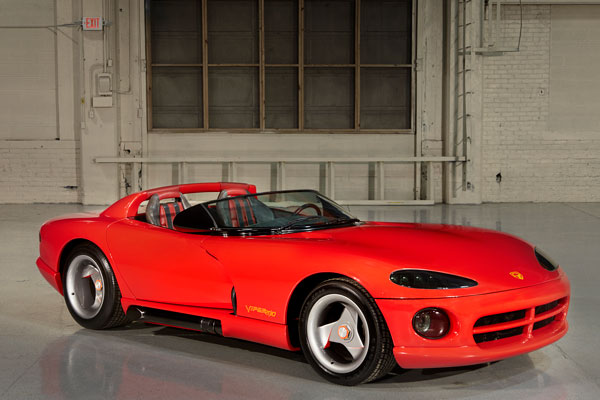
- Featured in: 1989 at various shows
- Designer: Tom Gale, Chief designer at Chrysler, and Neil Walling
A concept car’s task is to inspire desire in those who visit auto shows. The 1989 Dodge Viper RT/10 hit the target, maybe better than any other idea in contemporary history. Remember that this vehicle was introduced at a period when the Neon, LH, Ram, and oval-shaped minivans were still decades away, and Chrysler dealerships were filled with several variations of the boxy K-car.
This contemporary Cobra captured everyone’s attention with its sinewy lines and absurdly large V-10 engine, and Chrysler responded by putting it into production. Thirty years later, the Viper is still considered the pinnacle of automotive magnificence in concept and production forms.
12. General Motors LeSabre (1951)
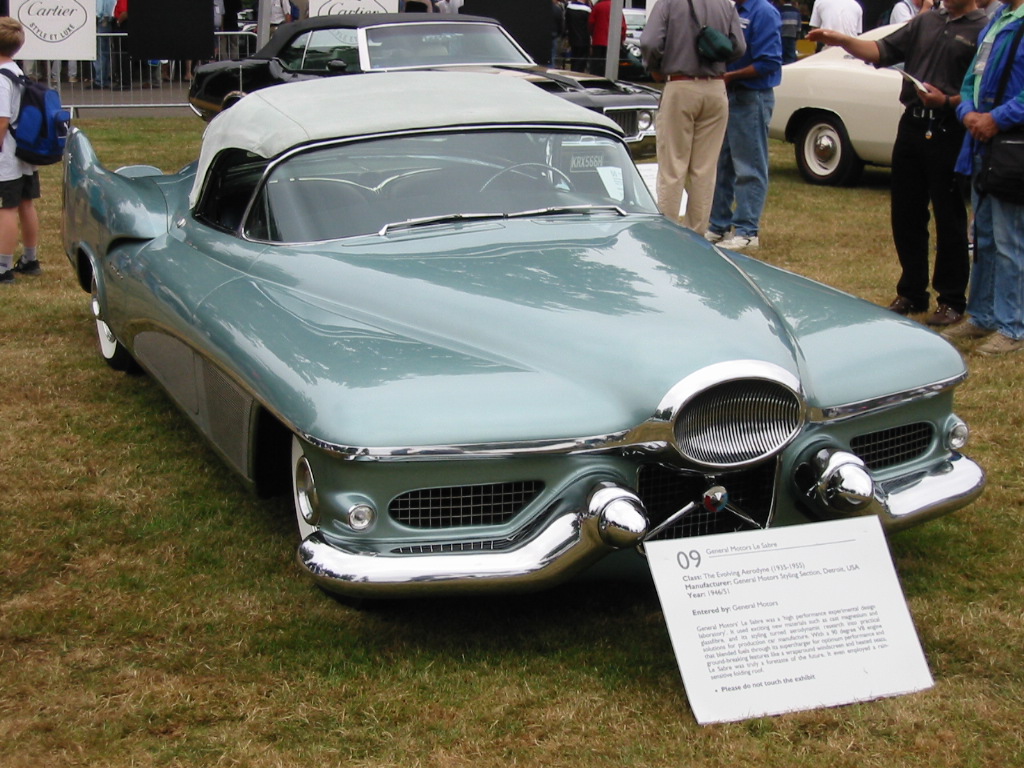
- Featured in: Television show called “Jay Leno’s Garage
- Designer: Harley Earl
Our soldiers had flying on their minds when they returned from World War II, and GM’s 1951 LeSabre offered us our first look at the aesthetic fads that would soon rule the auto industry. The LeSabre was the first automobile to include curved tailfins and a windscreen, which would later become defining features of 1950s design.
In the back, a massive central brake light shines like a jet fighter’s afterburner, and the oval in the middle, which resembles a jet intake, retracts and turns to show two side-by-side headlights. Excellent details you’re unable to see? a rain sensor, electronic jacks on the chassis for tire changes, and a gearbox in the back. Harley Earl designed the LeSabre, which he drove as his everyday transportation, like the Y-Job.
13. General Motors Firebird II (1956)
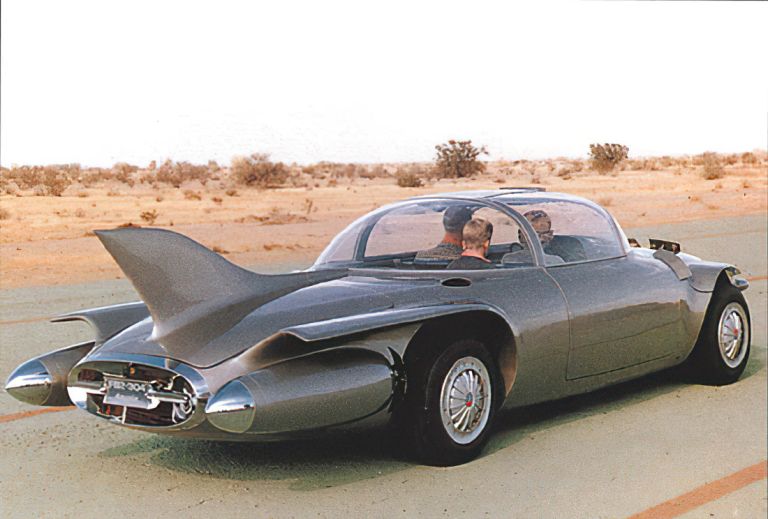
- Featured in: Television show called “Jay Leno’s Garage
- Designer: Harley Earl
The Firebird II, the second of four Firebird ideas from the 1950s and 1960s, demonstrated how far automotive designers could take the aviation metaphor. With a family vehicle that seats four this time. The Whirlfire GT-304 gas turbine that the Firebird II was equipped with produced 200 horsepower (147.1 kW) at 35,000 rpm (3665.19 rad/s) and gave it the appearance of a jet aircraft.
The Firebird II had a titanium body and cutting-edge technology, including a rearview camera, four-zone temperature control, and a four-wheel independent suspension with disc brakes. Even in autonomous driving mode, the Firebird II would follow metal strips buried in the pavement. GM predicted the OnStar system, which would debut precisely forty years later, by imagining a two-way communications system that passengers could use to request directions or book hotels.
14. Audi Rosemeyer Concept (2000)
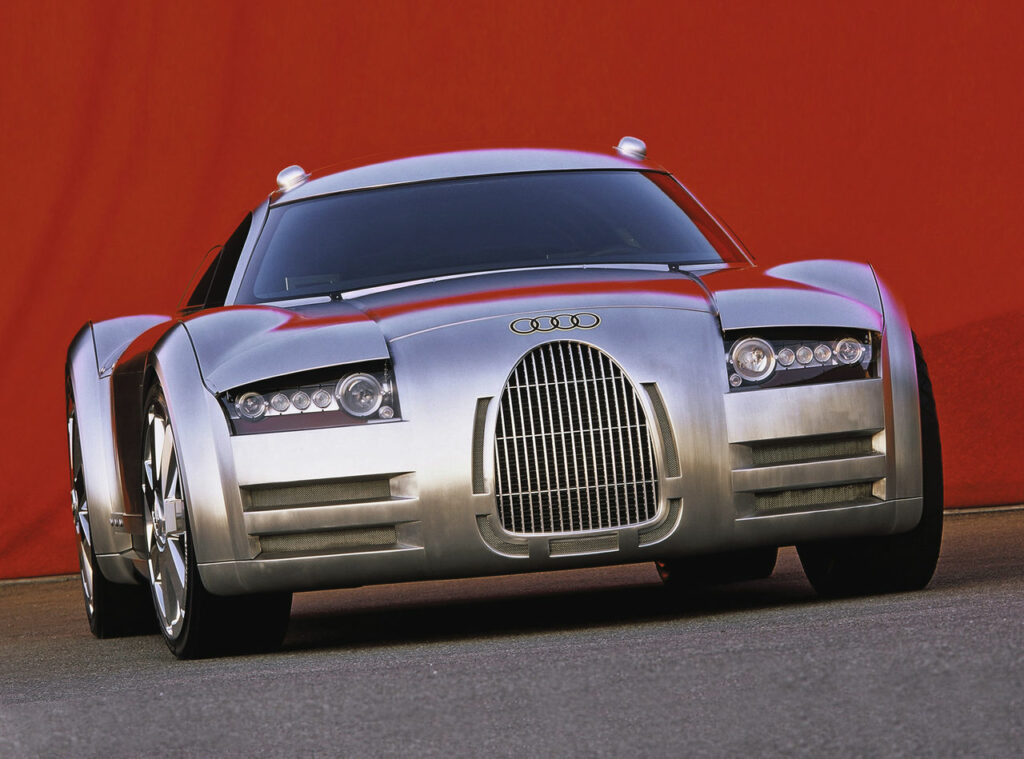
- Featured in: 2000 various international auto shows
- Designer Team: Peter Schreyer, Walter de Silva, and Hartmut Warkuß
The Audi Rosemeyer is a concept vehicle manufactured by Audi and displayed for the first time at Autostadt in 2000 before going on to other auto exhibitions all around Europe. Even though it was never meant to go into production, it attracted a lot of attention to the brand due to its stunning appearance and extremely sporty character. As a result, many prospective customers eagerly expected a production version of the product, but they were ultimately disappointed.
Bernd Rosemeyer, whose name was given to the vehicle in honor of him, was the driver of the 16-cylinder version of the Auto Union “Silver Arrows” Grand Prix racers in the 1970s and 1980s. The vehicle was intended to elicit strong feelings and attract attention. It was distinctive in combining contemporary design aspects with styling that strongly resembled those racers.
15. Volkswagen W12 Syncro (1997)
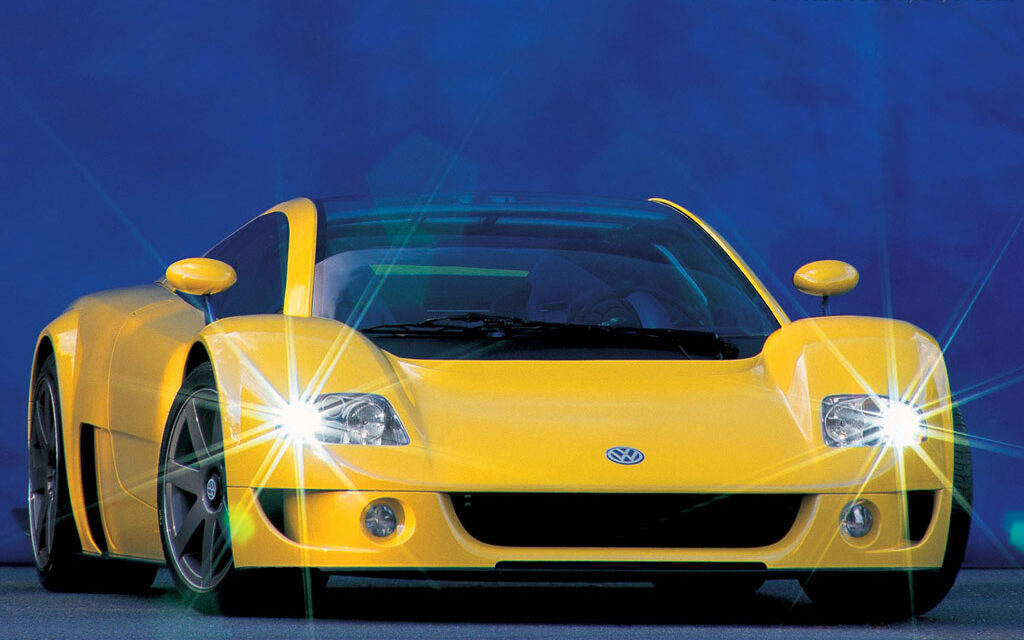
- Featured in: 1997 Tokyo Motor Show
- Designer: Fabrizio Giugiaro
In response to a request from Ferdinand Piech, the CEO of Volkswagen Group at the time, Giorgetto Giugiaro and his team at Italdesign were tasked with designing a Volkswagen sports car. The car was to be mid-engined, able to accommodate a 12-cylinder engine in a W configuration, and also can be configured with Volkswagen’s Syncro four-wheel drive system.
Volkswagen unveiled its first sports car concept in 1997 at the Tokyo Motor Show. It was a brilliant yellow W12 Syncro, also known as the W12 Syncro Coupé. It had a 5.6-liter W12 engine that produced 414 horsepower (309 kW) and was equipped with Syncro four-wheel drive. The Italian business Italdesign was responsible for this design and the W12 designs afterward.
16. Ford Nucleon (1957)
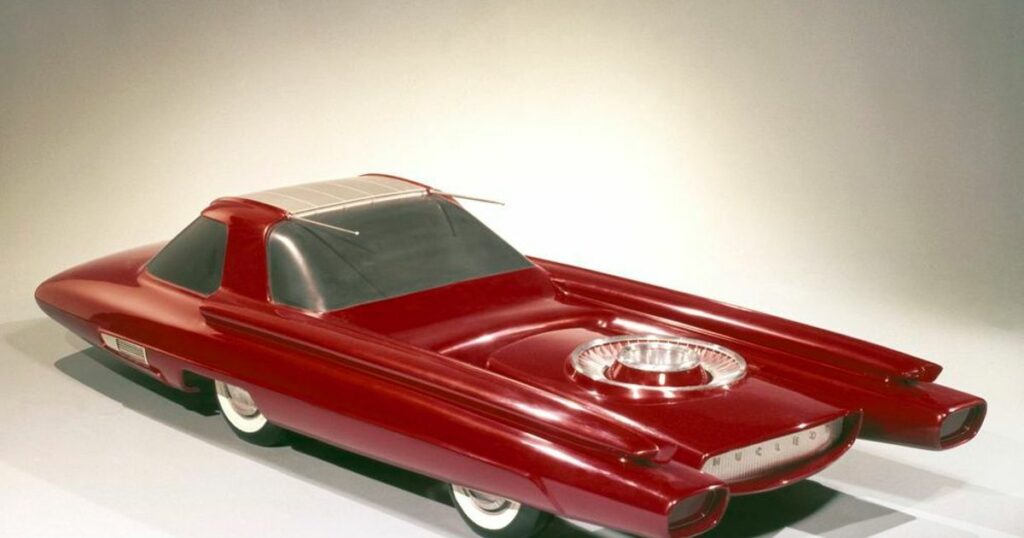
- Designer: Collaborative effort within Ford’s design and engineering teams
In the 1950s, nuclear power was all the rage, and Ford came up with the concept of an automobile called the Nucleon that was powered by atoms for peace. Ford envisioned a world in which petroleum would no longer be necessary; does this ring familiar?
The Ford Nucleon had a tiny reactor that could keep the vehicle running for up to 5,000 miles (8046.72 km) without additional fuel. After that distance, the reactor needed to be swapped out for a new one at the local service station, similar to how Tesla handles the interchange of its batteries.
Some potential problems are hidden by the design of the Nucleon, such as the necessity to keep passengers as far away from the hot zone as possible, not to mention wheels positioned in such a manner as to support the load of the car’s heavy lead shielding.
Despite these design choices, the Nucleon can still function as intended. Because, let’s face it, who wants to hang out near a nuclear reactor built by the same guys who would later give us the Pinto? We would suggest the Nucleon was only a mock-up, not an actual automobile that could be driven on the road.
17. Alfa Romeo Scighera (1997)
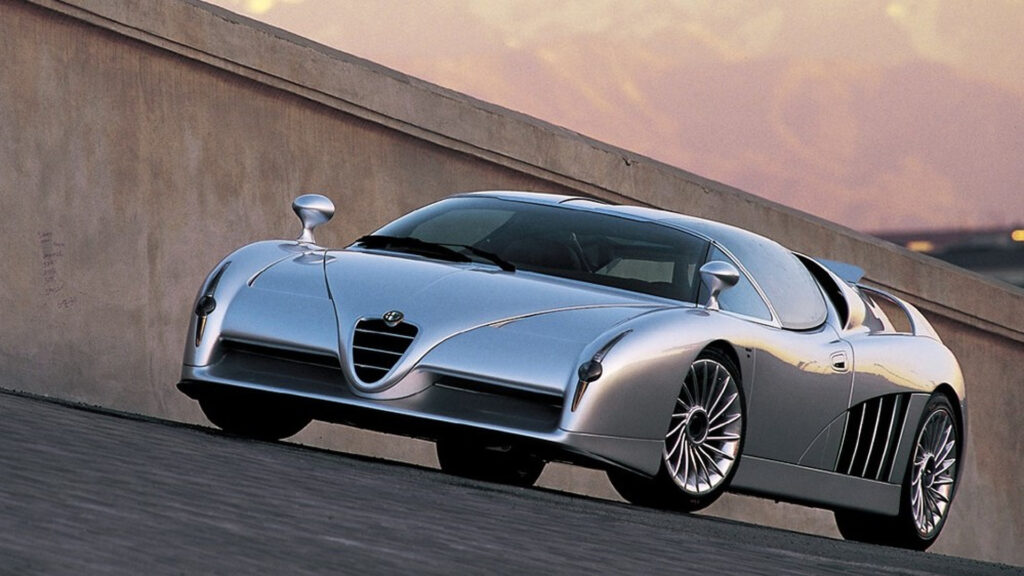
- Designer: Fabrizio Giugiaro
The Alfa Romeo Scighera is a concept vehicle created in 1997 by Italdesign of Turin, Italy. It was designed by Fabrizio Giugiaro, who was inspired by future aesthetics and functionality. “Scighera” comes from a Milanese dialect word meaning “mist.”
The Scighera is derived from the 164 and has an all-aluminum body, a frame structure constructed of an aluminum-carbon fiber composite, and an Alfa Romeo 3.0 L twin-turbocharged V6 engine. The body of the Scighera is composed entirely of aluminum.
At 7,500 rpm, the engine generated its maximum power output of 400 horsepower (294.2 kW) and total torque production of 327 lb-ft (45.17 kg-m). The 155 cars served as the basis for the all-wheel drive technology. Connolly leather was used to upholster the seats in the car’s interior.
18. Corvette Mako Shark II (1965)
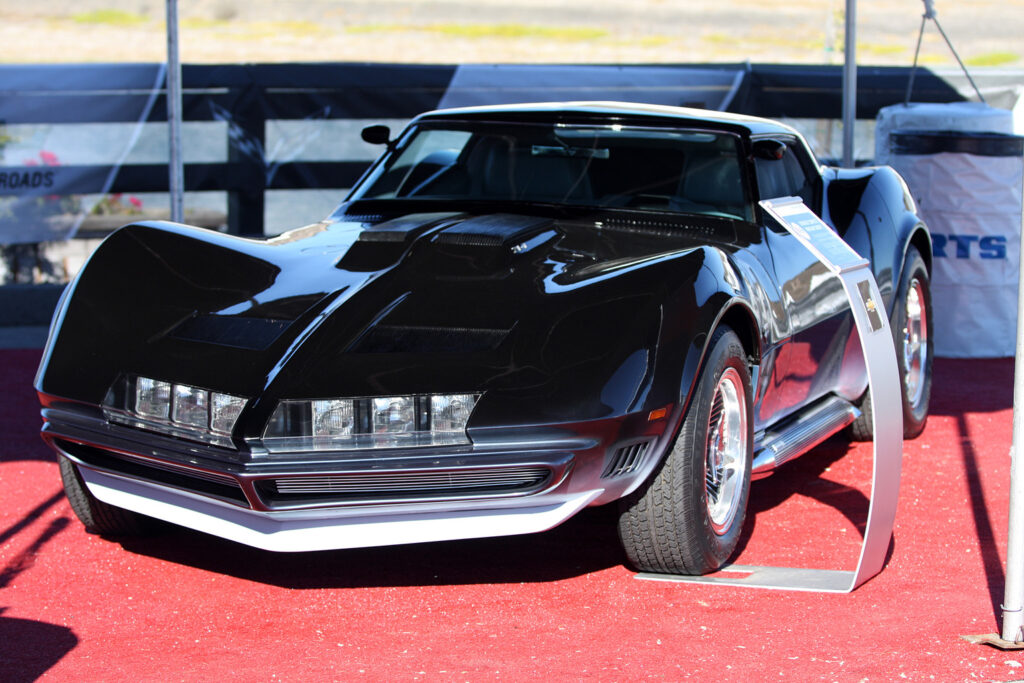
- Designer: Larry Shinoda
It’s uncommon for GM to offer a sneak glimpse at a future vehicle, but that’s precisely what occurred in 1965 when the firm unveiled the Mako Shark II, one of the two Corvette concept cars with the Mako Shark moniker. More than two years before the 1968 Corvette was on sale, the second Shark gave the world a nearly uncovered glimpse of it. How did that come about?
Due to last-minute design difficulties, the C3’s presentation was postponed until the summer of 1967 as a ’68 model, while it was initially planned to debut in 1966 as a ’67 model. With that said, the Mako Shark II is a stunning concept vehicle, and its protruding hood and towering fenders hint us at a potentially slightly-different design approach for the third-generation Corvette.
19. Plymouth Prowler (1993)
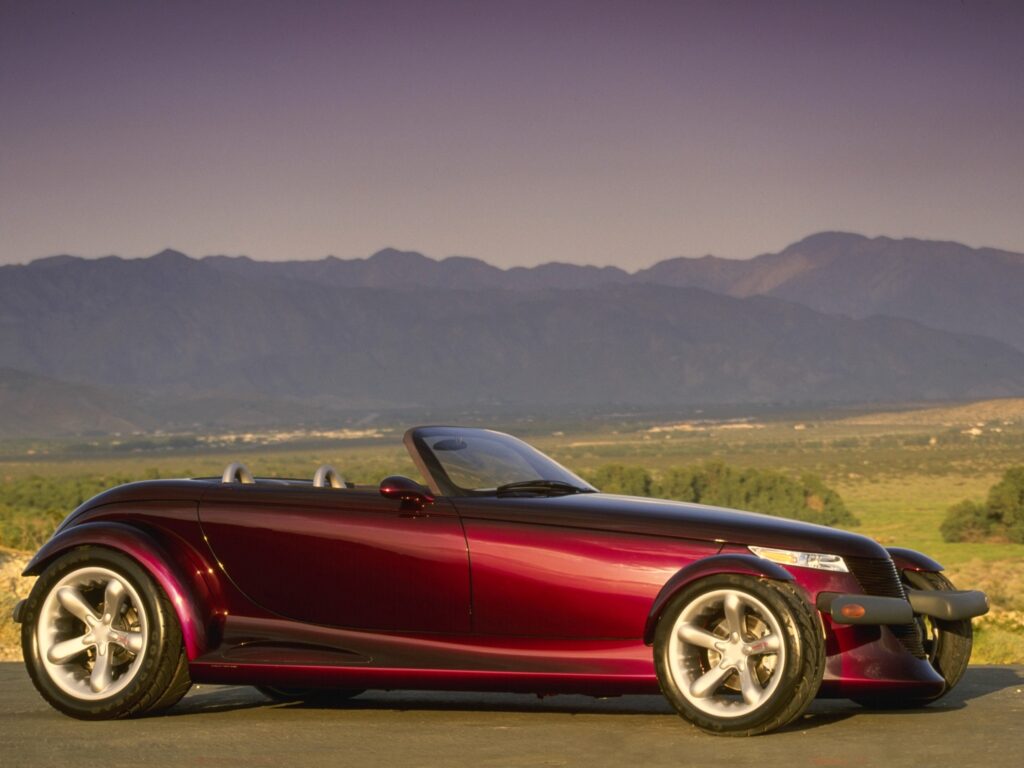
- Designer: Thomas C. Gale
Street rodding underwent significant modification in the early 1990s. That may have influenced Chrysler’s choice to create a street rod-inspired successor to the Viper. It’s difficult to say, but the Prowler exhibition vehicle was just as unique as the Viper. Like the Viper, the Prowler served as a test vehicle for innovative assembly techniques that Chrysler wanted to use on its mainstream vehicles.
However, because that was how Chrysler operated back then, it went into production for the 1997 model year after also becoming popular with the general public. Even after the Plymouth brand was discontinued in 2001, it continued to be produced under the Chrysler Prowler nameplate.
20. Audi Quattro Spyder Concept (1991)
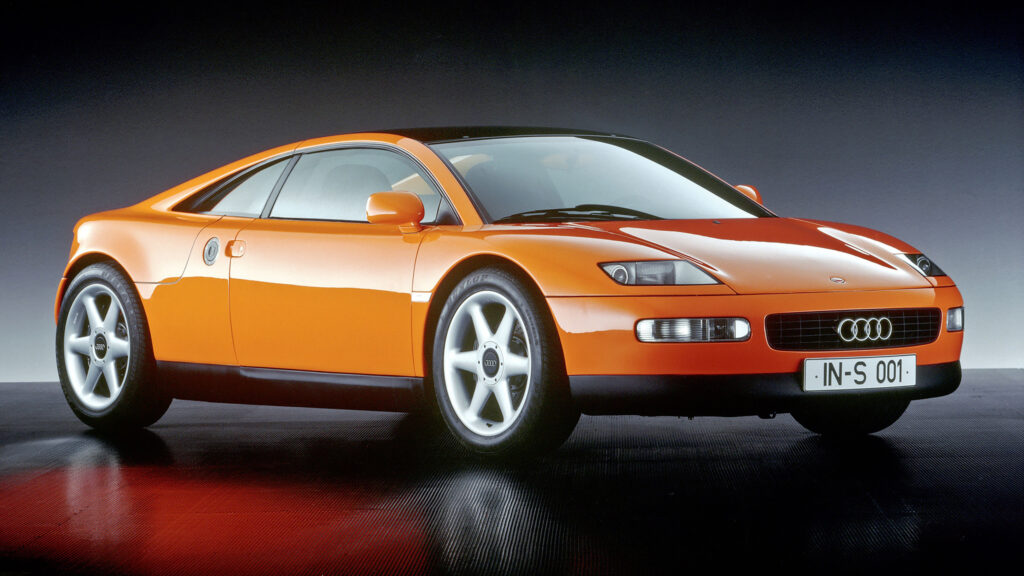
- Featured in: 1991 Frankfurt Auto Show
- Designer: J Mays
In 1991, the Frankfurt Auto Show introduced the Audi Quattro Spyder concept. A mid-engine sports vehicle with an aluminum body was called the Quattro Spyder. Audi wouldn’t put a similar vehicle into production until 2008; this was the excellent Audi R8.
A 2.8 liter V6 engine producing 174 horsepower (127.8 kW) and 181 lb-ft (25.031 kg-m) of torque drove the Audi Quattro Spyder. Obviously, given the name “Quattro,” the power was routed to all four wheels through the 5-speed manual gearbox.
FAQs
What distinguishes concept automobiles from conventional vehicles?
Unconventional designs, cutting-edge technology, and materials that might not be suitable for commercial production are frequently found in concept automobiles. They combine cutting-edge innovations and futuristic aspects to push the limits of automobile innovation. Concept automobiles are built to fascinate and thrill with their imaginative conceptions, unlike production cars, which are made for mass market consumption.
Do concept cars have real-world uses, or are they only for show?
Concept cars typically have helpful features that may be incorporated into the following production models, despite their primary purpose of showcasing concepts and potentials. Numerous cutting-edge technology and design aspects in concept automobiles are being developed for real-world uses, including increased fuel efficiency, safety features, and networking possibilities.
Are concept automobiles built in large quantities for sale?
Concept automobiles aren’t made in large quantities. They are primarily made to display cutting-edge engineering prowess, design concepts, and technology. Concept cars are designed primarily to inspire and guide the design of future automobiles. However, some of its components may find their way into production versions.
No comments:
Post a Comment